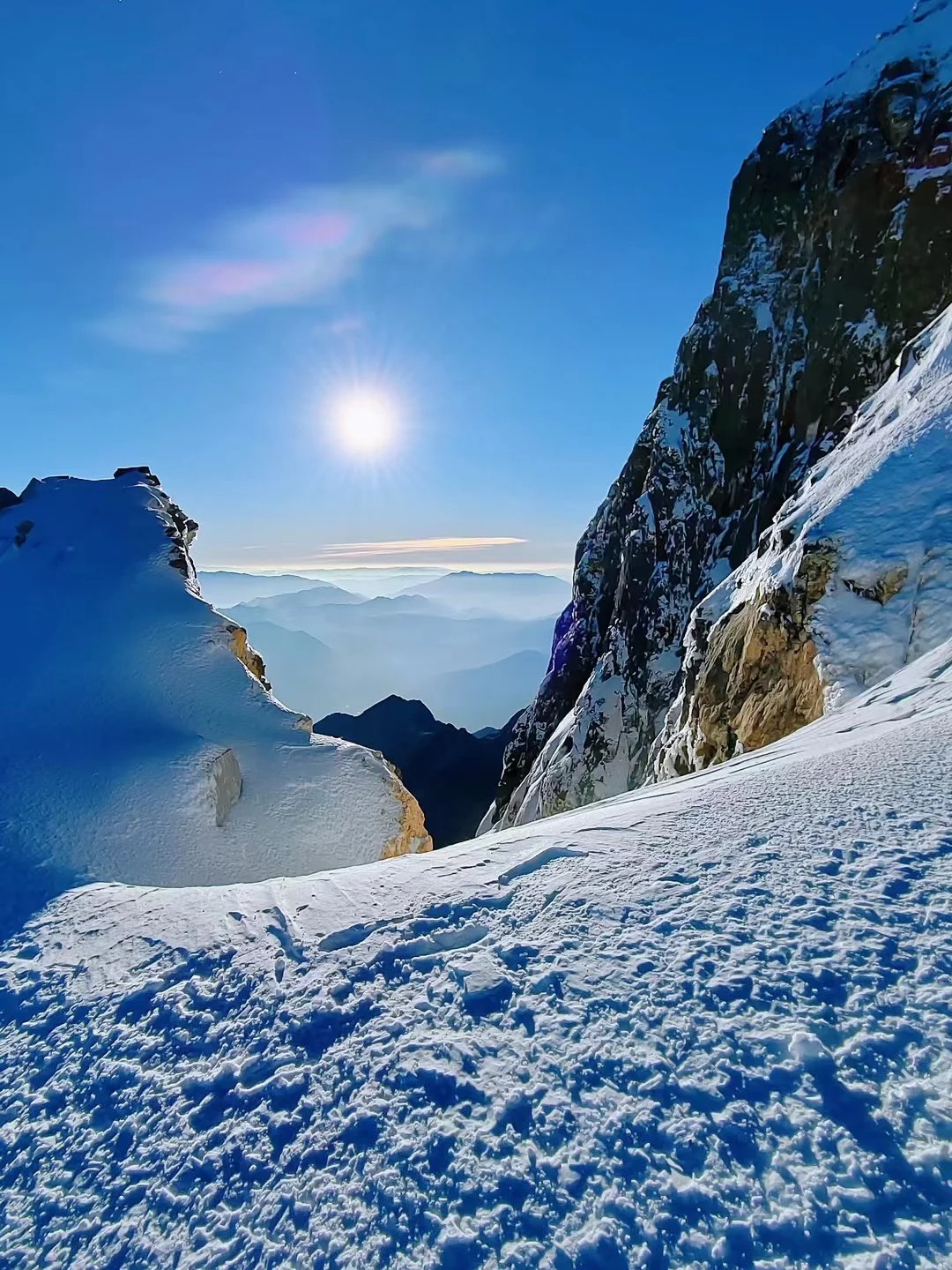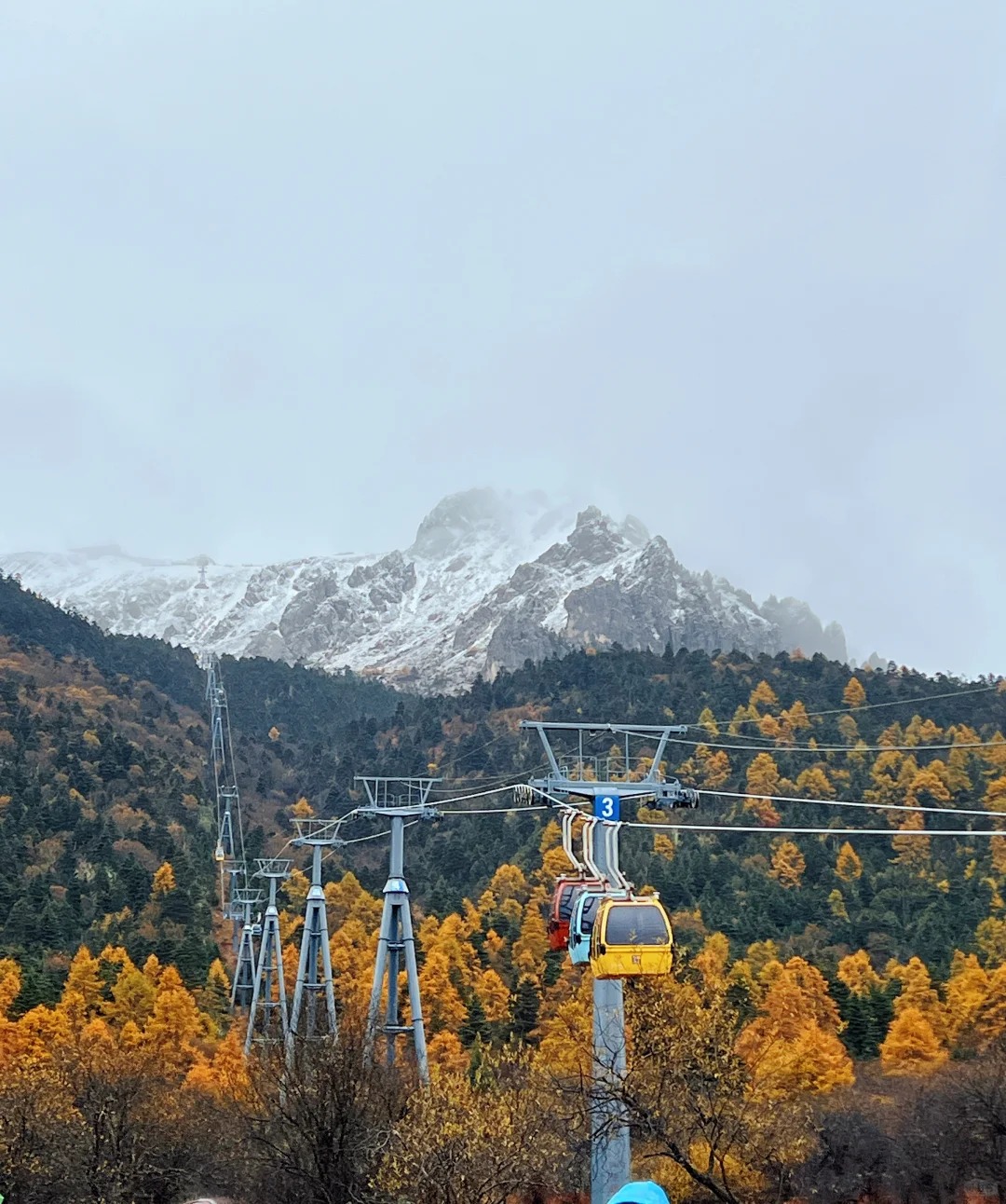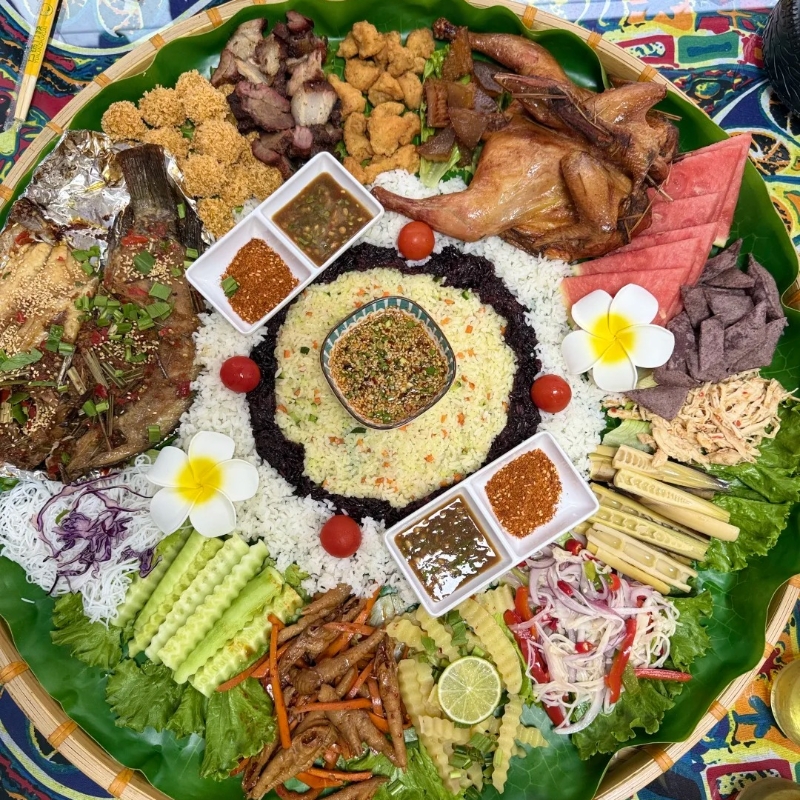
Haba Snow Mountain
Haba Snow Mountain quietly sits across from the Jade Dragon, watching innumerable tourist buses fly by. Most of them skip it, which is kind of the point. The trailhead begins in a sleepy Naxi village where dogs nap in the sun and locals still rent out crampons from their front yards. It’s high—5,396 m is no laughing matter—but the gain feels honest, rather than staged. You’ll spend one night beneath innumerable stars, drinking yak butter tea that tastes like smoke and salt, and possibly cursing the wind at 4:00 A.M. on summit day. Yet, when the first rays of light hit the ridge and the Tiger Leaping Gorge opens below, you’ll get it—why they call Haba Snow Mountain the mountain which silently tests what you’re made of.
Quick Facts about Haba Snow Mountain
| Location | Between Shangri-La and Tiger Leaping Gorge, Yunnan Province |
| Altitude | 5,396 m (17,703 ft) |
| Difficulty | Medium to Challenging (depends on route and altitude adaptation) |
| Base Village | Haba Village (2,600 m) |
| Best Season | April–June for flowers, October–November for clear skies |
| Ticket & Guide Fee | Entrance ~80 RMB, guide + gear ~400–600 RMB/day |
| Recommended Duration | 3 days (Base Camp + Summit) |
What Makes Haba Snow Mountain Worth the Climb

Plants and Haba Snow Mountain
More Than Just Another Yunnan Peak
Most visitors end their Yunnan trip at Yulong Snow Mountain, posing in hired parkas before rushing back to Lijiang. That’s fine if comfort matters. Yet Haba Snow Mountain sits across Tiger Leaping Gorge, quietly carrying its own weight, with fewer visitors and far more heart. Locals call it the younger brother of Jade Dragon—same lineage, different soul. Yulong shines for cameras; the Haba mountain climb feels raw, full of mud, wind, and silence that hums in your chest.
A Naxi elder I met in the village said the two mountains are twin brothers guarding the gorge—one polished for tourists, the other waiting for real mountaineers. It fits perfectly. Here, trails pass prayer flags and yak fields, not souvenir shops. The scent of smoldering pine follows your steps, and every breeze carries yak bells from somewhere unseen. Hikers on TripAdvisor call it peaceful but wild, and they’re right. It’s a silence that breathes, not emptiness.
Though Yulong Snow Mountain is the showpiece, Haba Snow Mountain is the one that stays with you. In midsummer, you hear glacier water trickling through rocks. You may spot children herding goats, waving like they belong to the mountain’s rhythm. This climb isn’t about conquering; it’s about realizing how small you are—and that kind of humility is rare these days.
Stories You Don’t Hear in Travel Agencies
Tashi met me in the village of Haba, where he was leaning against a rusty pickup, with crampons dangling down the mirror. He was a coarse Mandarin and a more skilled laugher. First time, he laughed, and I was about to respond. We walked up a valley reeking with wet grass and diesel. Towards night, chimneys of stone smoked and children were following us with sticks. Frost stuck on our tent-ropes that night, and Tashi snored like the drum.
The following morning clouds were so near that you felt the cold. He indicated the ridge and indicated, The mountain breathes here. It did--each breeze was alive, and I was pushed against by my jacket. No brochure informs that a Haba Snow Mountain hike is more of a talk than a fight. The guide does not simply lead, but he reads the clouds, he hears the crack of the snow, and he instructs you to do the same.
In Lijiang, there are glossy posters of summits that can be purchased. Here, the tales are slapped to your feet--smeary and uncouth and true. This is why Haba Snow Mountain guides do not advertise, as their reputation exists in the word of mouth, the memory of those people who already reached the 5,000 meters of the mountain and understood that the wind could tell more than the slogans.
The Climb Itself – Routes, Difficulty, and Real Expectations
- Dusk of Haba Snow Mountain
- Sky and Haba Snow Mountain
Day 1–2: Haba Village to Base Camp
All of the Haba Snow Mountain hikes begin in the same manner: dusty roads, sleepy dogs, and hikers looking fearfully at their altitude applications. The first part, which starts at Haba Village (c. 2,600 m), ascends through barley plots, rhododendron shrubs, and bridges made of stone and yak bells. The road is not paved, and it is welcoming enough to be approached with a 4×4 however, after the initial distance, the trail starts zigzag. The trekkers spend an average of 5-6 hours to the mid way rest hut at the height of 3,200 m and additional 3 hours at the base camp at 4,100 m. It seems like a sudden shift - the air becomes even less dense, the talk becomes less fast, the laughter becomes heavy breathing.
By afternoon, the clouds are low drifting over the meadows, and the prayer flags wave like laundry. No hotel the base camp, Tents of canvas upon frozen ground, With sort of mats, thick quilts, And condensation making lace On tent roof. It has a little cabin selling noodles and instant coffee at 30-40 yen, and it feels like winning. The toilets? Wooden sheds, with airing mountain-fresh. Nevertheless, all of the moods are lifted when the peaks change their color to pink in the evening. One TripAdvisor member posted the following; the scenery along base camp is not half as good as the Swiss Alps--trust me, when the sun is shining on those ridges.
The temperatures drop below -5 C during the nights with -10 C in November. Crampon snickering, guides half-waking out instructions, and yaks crunching grass all around makes it seem like you feel the pounding of the mountain under your pillow. The Haba Snow Mountain challenge here does not entail sharp cliffs, it is the coping with the elevation, keeping warm and not listening to the thin wind chirping in your tent.
Day 3: Base Camp to the Summit
The wake up call is preceded by dawn. The majority of guides begin at 3 am. in the moonlight and jest quietly to maintain spirits high as headlamps sweep over the ice. The trail climbs quickly between 4,100 m and 5,396 m in a 6 km stretch- they sound short until you consider the oxygen that is half present. You will cross frozen streams, get on crampon tracks that crunch like glass, and sometimes hear the wind cut so clean that it is like it was cutting your thoughts.
A good guide of Haba Snow Mountain establishes a rhythm: fifty steps, rest, inhale, fifty steps, rest, inhale. Most people doubt their sanity in the ridge that is above 5,000 m; the legs are sandbags, lips are cracking and every breath is white. Guides can have spares of oxygen cylinders and pulse oximeters- they do not fuss but they watch. The eastern sky falls ablaze with Tiger Leaping Gorge at dawn. The glacier becomes gold after a period of up to two minutes after which the light becomes silver. Even the slight flash justifies all the blisters.
I recall how my fingertips would be numb on the rope and someone behind me informing me not to look down, instead, to listen. The snow was as dry as paper. Then you come to the top, where you have no flags, no fences, only a little bit of metal, a horizon of cloud beneath your feet, and the silence is so great that you can hear your own heart beat. The reward to the Haba Snow Mountain climb is that: not heroic, but human.
It is easier going down to camp--three hours down the hill, screaming knees. Back base you will have the soup being heated up on the yak-dung fires, and laughter among people you do not know, and the old trick of hearing phones regain their accustomed signal. The majority of the people fall in their tents with a smile.
Is It Dangerous? The Truth Behind “Haba Snow Mountain Hike Death” Searches
Well, we have to be honest in this regard: you have likely Googled it. The title of the Haba Snow Mountain hike death is used repeatedly enough to scare beginners. The official documents and the local newspapers reveal that there are very few cases of death cases over the last 10 years, most of which are related to unexpected snowstorms or people hiking without following the guide. The number of retreats is greater than that of accidents induced by altitude sickness and exhaustion. In TripAdvisor, one of the guides wrote, people find themselves getting into trouble when they make a rush.
That is the rule, never hurry up a 5,000 m mountain. The difficulty of Haba Snow Mountain is a factor of season, fitness and weather fortunes. In October there are dust roads; in April there are ice-crystals lurking in the shadow; storms of summer can arrive in less than half an hour. It is not unreasonable that guides insist on helmets and crampons above 4,800 m. Traveling insurance is no bargain; neither are nice boots.
The locals believe that the mountain decides who will make it. Perhaps it is superstition, but it keeps you down to earth. The danger here is not movie making- it is micro: it is dehydration, ego, or belief that you get invincible because it is easy to get into. Give it the respect it deserves, take your time, follow your leader and you will return with lungs full of fresh air and tales that do not require elaboration.
Stay, Eat, and Recover in Haba Village
- Haba Village
- Base Camp
- Baishuitai
Guesthouses That Welcome Foreign Travelers
Haba Village is a reward in itself after the summit, a cluster of stone-and-wood houses resting on green slopes where prayer flags float in the wind. Most hikers stay at Haba Snow Mountain Inn, Tina Guesthouse, or Haba International Youth Hostel, all ranked 4.5★ on TripAdvisor. These places are small yet friendly, and most hold an official foreigner reception permit, meaning you can check in with a passport without police registration.
Rooms usually cost ¥150–250 per night, depending on season and whether you want a mountain view or a simple bunk. Don’t expect luxuries—you get a heavy blanket, a small heater that chirps like a cricket, and slow but hot water. Still, after two days of thin mountain air, even a lukewarm shower feels like a miracle. At night, the sky sinks low, stars scatter like dust, dogs bark far away, and someone plays a quiet Naxi tune on a phone speaker.
This is not slick tourism; it’s genuine, family-run friendliness. Most hosts are climbers themselves or have relatives working as guides. They ask about your climb, pour hot tea before you unpack, and tell you whether the mountain looked kind that day. It’s the true Haba Snow Mountain accommodation experience—simple, human, and a comforting contrast to the roaring wind above 5,000 meters.
Local Food You’ll Remember at 3,000 Meters
Haba Village dinner begins with the steam fogging of the windows. The meat of the yaks boils in metal dishes, and the soup is spicy with chili peppers and wild spices. It is smelling slightly of smoke and damp rock. The yak fat makes it chewy--it has a heaviness that you do not want in the cold, but that is soothing. I did so after I had gone down the first, and my fingers still numb, and like medicine.
It is served locally with qingke bing, barley pancakes that are cooked crispy on the edges and cups of su you cha, butter tea blended until it turns creamy. Others are cringing at the initial taste; others tell them that it is the best they have tasted throughout the trip. Perhaps it is something to do with the altitude, or the exhaustion, but even instant noodle has a different flavor here.
That is all the silent happiness of the Haba Snow Mountain life--no fancy stuff, only food that has a memory of its origin. You will walk away a full table with a slight dizziness caused by the elevation and the feeling of having come back, had it been another bowl of the yak broth, which seems like it was made by the mountain itself.
How to Reach Haba Snow Mountain (From Lijiang & Shangri-La)
From Lijiang – Road Conditions and Travel Options
Lijiang is the typical launch pad in case you are wondering how you are going to Haba Snow Mountain. Transport Center or hostel-departing shared minivans, about ¥120-150 each way, take about 4 hours. This highway runs along Tiger Leaping Gorge and passes through walnut trees and peaceful Naxi villages. It is picturesque and wide, in fact, when vehicles come in contact, one of them will always reverse. Taxi through Trip.com or Ctrip ¥600-700 and saves time in case you have equipment. The majority of the Haba Snow Mountain guides are able to pick you up in front of your hotel. By now, as you proceed to Haba Village, the air is even thinner, clouds are low and you will be feeling the pull even before you start pulling.
From Shangri-La – The Scenic Backdoor Route
Coming out of a Shangri-La is more expensive and dramatic. Haba Snow Mountain is approximately 110 km away and it takes 3.5-4 hours along high meadowlands and yak pastures. Before the final winding stretch the route goes through the white terraces of Baishuitai, which are a nice tea stop. The roads are partially gravel roads, and on some occasions obstructed by grazing goats. If you're planning to explore more of Yunnan’s old towns and lakes after the climb, take a look at this full guide to the best things to do in Dali. I could see the yaks tossing their tails through slow motion out the window of the van, it seemed eternal. Since this path begins at 3200 meters, have a night out in town to acclimatize. The Haba Snow Mountain hike is even better when you hurry and you can go slower and have the altitude speak.
FAQ about Haba Snow Mountain
Q: How long does it take to climb Haba Snow Mountain?
The average time that a hiker spends on the journey is three days; one day to the Base Camp, one day of acclimatizing with the mountain, and a final summit attempt, which begins before dawn. Some of them extend to four in case of bad weather. Speed is not an option in the Haba Snow Mountain hike it is about maintaining a pace, taking enough water and giving your lungs time to keep up with the mountain.
Q: Is Haba Snow Mountain suitable for beginners?
Yes, but only the patient kind. The Haba Snow Mountain is considered the beginner 5,000m peak in China, i.e. no ropes or ice-training are required. Nevertheless, it becomes bitter above 4,800 m. According to local guides, beginner training must include at least one month of leg and stamina training to be completed. Hope more hiking shoes, less macho.
Q: What should I pack for the Haba Snow Mountain hike?
Layers, always layers. Nights drop below freezing. Also carry waterproof gloves, crampons, and sun glasses - the sun can be scathing. Guides avail harnesses and helmets, which most often qualify as part of the price of the climb. Snacks Don’t forget snacks; instant noodles in the camp cost ¥30-40. When your pack is too light, then it is likely to be incomplete and lacking something crucial.
Q: How cold does it get at Base Camp?
At 4,100 m, the temperatures drop to about -5 o C at night and low as -10 o C during storms. The tents are robust but the condensation is frozen by dawn into crystals. Hot tea and dry socks are gold. Frost on sleeping bags is even reported by even the summer climbers up Haba Snow Mountain, so do not ever trust the season.
Q: Do I need a guide to climb Haba Snow Mountain?
Absolutely. A licensed Haba Snow Mountain guide isn’t optional—it’s the rule. They handle ropes, read weather, and deal with emergencies. Guides cost about ¥400–600 per day with gear. Most speak basic English, and many double as cooks at camp. Their pace, not yours, decides if you summit safely.
Q: Can I combine Haba Snow Mountain with Tiger Leaping Gorge?
Yes, and most travelers do. The trailhead for Tiger Leaping Gorge is just 20 km away from Haba Village. You can trek the gorge first, then rest a night before tackling the climb. Several guesthouses run shuttle vans between the two, so planning both together saves time and money.
Q: How do I deal with altitude sickness in Haba Village?
Climb slow, hydrate like it’s a job, and skip alcohol the first night. Locals sell bottled oxygen and Hongjingtian tablets for prevention. If dizziness hits, rest or descend immediately. Remember: no summit is worth your lungs. Altitude at Haba Snow Mountain is real; pride won’t beat physics.
Q: How does Haba Snow Mountain compare to Yulong Snow Mountain?
Rarely. Documented fatalities are few, mostly linked to sudden snowstorms or ignoring guide warnings. The Haba Snow Mountain hike is considered safe with proper pacing and equipment. Don’t chase speed records; storms here move faster than tourists think. Respect the mountain, and it respects you back.







